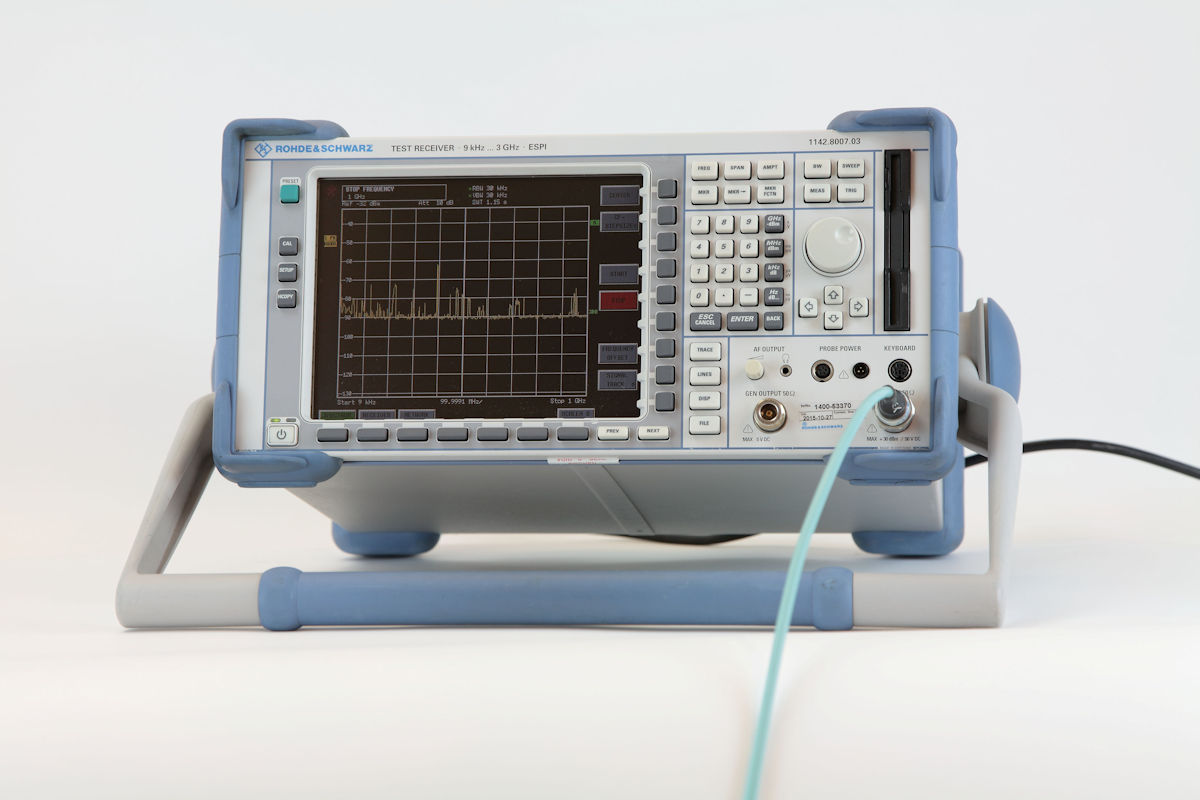
Ever wondered how electronic devices pass strict regulations before hitting the market? That's where an EMC test receiver comes into play. These devices ensure gadgets don't interfere with each other by measuring electromagnetic emissions. Imagine your smartphone causing your TV to glitch—no one wants that! EMC test receivers are the unsung heroes keeping our tech world harmonious. From checking compliance with international standards to ensuring safety, these tools are indispensable. Curious about how they work or why they're crucial? Stick around as we dive into 28 fascinating facts about EMC test receivers.
What is an EMC Test Receiver?
An EMC test receiver is a specialized instrument used to measure electromagnetic interference (EMI) and ensure that electronic devices comply with regulatory standards. These devices are crucial in industries where electronic equipment must operate without causing or being affected by unwanted electromagnetic disturbances.
-
EMC stands for Electromagnetic Compatibility. This means that electronic devices can operate without interfering with each other.
-
EMC test receivers measure both conducted and radiated emissions. Conducted emissions travel through cables, while radiated emissions travel through the air.
-
They are used in various industries. Automotive, aerospace, telecommunications, and consumer electronics all rely on EMC test receivers.
-
These devices help in product development. Engineers use them to identify and fix EMI issues early in the design process.
How Do EMC Test Receivers Work?
Understanding how these devices operate can help you appreciate their importance in ensuring electronic devices meet regulatory standards.
-
They use antennas to capture electromagnetic waves. These antennas convert the waves into electrical signals.
-
The signals are then filtered and amplified. This process helps in isolating the specific frequencies that need to be measured.
-
They display results in real-time. Engineers can see the levels of EMI and make adjustments on the spot.
-
They can perform automated tests. This feature saves time and ensures consistent results.
Why Are EMC Test Receivers Important?
The importance of EMC test receivers cannot be overstated, especially in today's technology-driven world.
-
They ensure compliance with international standards. Organizations like the FCC and CISPR set these standards to minimize EMI.
-
They help in avoiding costly recalls. Non-compliant products can lead to recalls, which are expensive and damaging to a brand's reputation.
-
They improve product reliability. Devices that meet EMC standards are less likely to malfunction due to EMI.
-
They enhance user safety. Reducing EMI can prevent interference with medical devices and other critical equipment.
Types of EMC Test Receivers
Different types of EMC test receivers are designed for specific applications and industries.
-
Spectrum analyzers are a common type. They measure the frequency spectrum of electromagnetic signals.
-
EMI receivers are specialized spectrum analyzers. They are designed specifically for measuring EMI.
-
Time-domain receivers offer faster measurements. They can capture transient EMI events that other types might miss.
-
Portable EMC test receivers are available. These are useful for on-site testing and troubleshooting.
Key Features of EMC Test Receivers
Modern EMC test receivers come with a variety of features that enhance their functionality and ease of use.
-
They have high sensitivity. This allows them to detect even the weakest EMI signals.
-
They offer a wide frequency range. This makes them versatile for different types of measurements.
-
They include advanced filtering options. These filters help in isolating specific frequencies for more accurate measurements.
-
They come with user-friendly interfaces. Touchscreens and intuitive menus make them easier to operate.
Applications of EMC Test Receivers
These devices are used in a wide range of applications, each requiring specific features and capabilities.
-
Automotive testing ensures vehicle electronics don't interfere with each other. This is crucial for safety and performance.
-
Aerospace applications require stringent EMI controls. Aircraft systems must operate reliably without interference.
-
Telecommunications rely on EMC testing. Ensuring that devices don't interfere with each other is vital for clear communication.
-
Consumer electronics must meet EMC standards. This ensures that devices like smartphones and laptops work reliably.
Challenges in EMC Testing
Despite their importance, EMC testing comes with its own set of challenges that engineers must overcome.
-
High costs can be a barrier. EMC test receivers and the testing process can be expensive.
-
Complexity of modern electronics. As devices become more complex, identifying and fixing EMI issues becomes harder.
-
Regulatory changes require constant updates. Staying compliant means keeping up with evolving standards.
-
Environmental factors can affect results. Temperature, humidity, and other factors can influence EMI measurements.
Final Thoughts on EMC Test Receivers
EMC test receivers are essential for ensuring electronic devices meet regulatory standards. They help identify electromagnetic interference, ensuring devices operate without causing or experiencing disruptions. These receivers are crucial for product development, compliance, and maintaining the integrity of electronic systems.
Understanding their functions, types, and applications can significantly impact the quality and reliability of electronic products. From pre-compliance testing to full compliance assessments, EMC test receivers play a vital role in the tech industry.
Investing in a good EMC test receiver can save time, money, and resources by catching potential issues early. Whether you're a seasoned engineer or new to the field, knowing the ins and outs of these devices is invaluable.
Stay informed, stay compliant, and keep your electronic devices running smoothly with the right EMC test receiver.
Was this page helpful?
Our commitment to delivering trustworthy and engaging content is at the heart of what we do. Each fact on our site is contributed by real users like you, bringing a wealth of diverse insights and information. To ensure the highest standards of accuracy and reliability, our dedicated editors meticulously review each submission. This process guarantees that the facts we share are not only fascinating but also credible. Trust in our commitment to quality and authenticity as you explore and learn with us.
